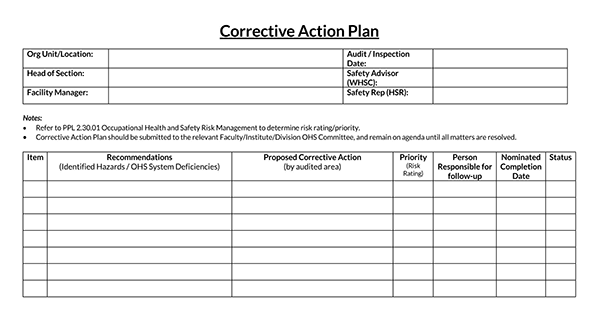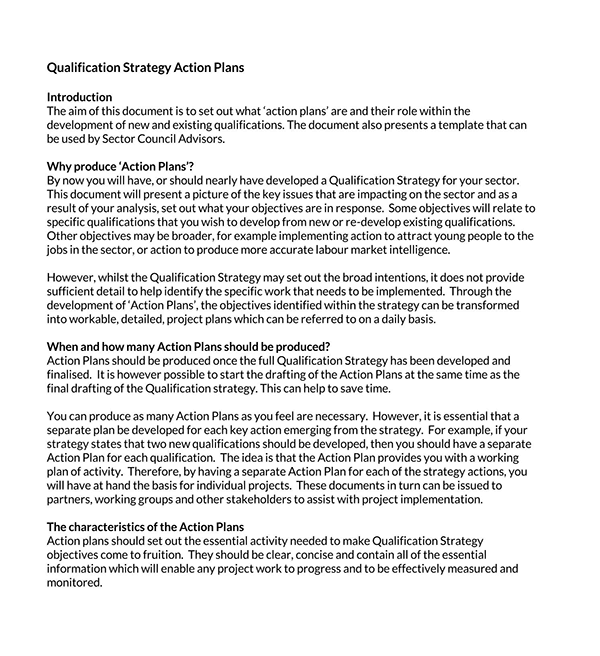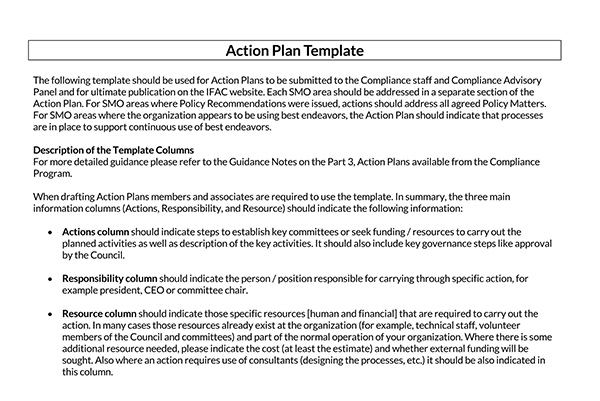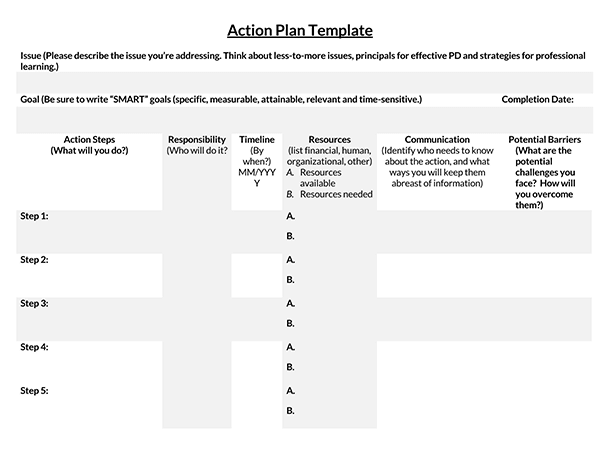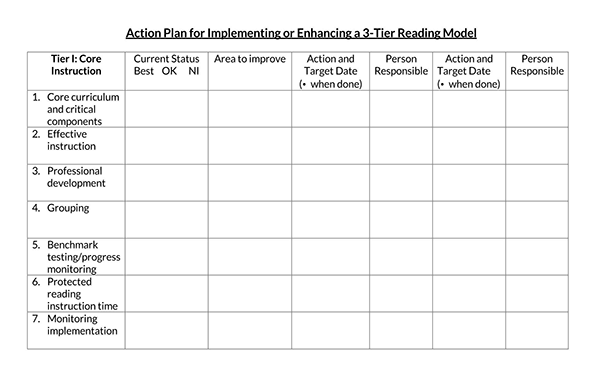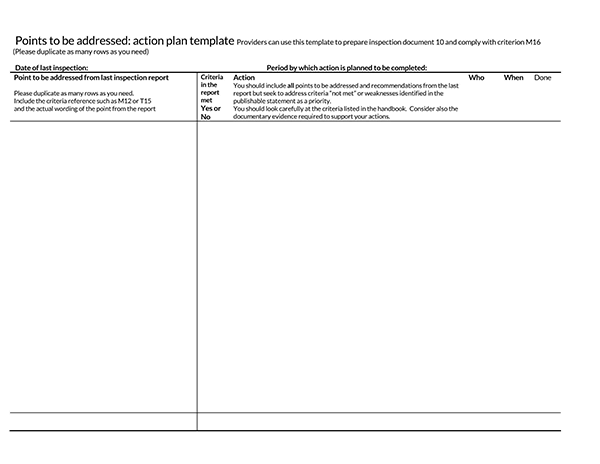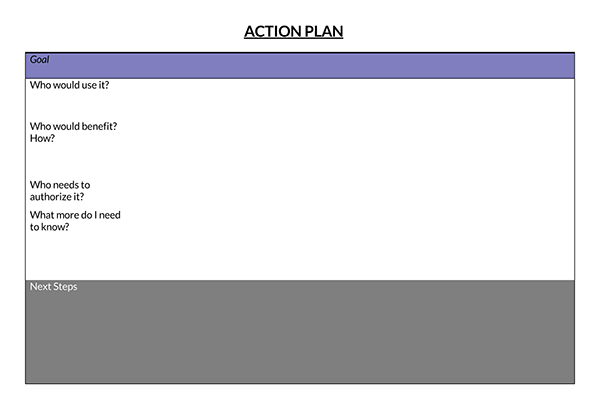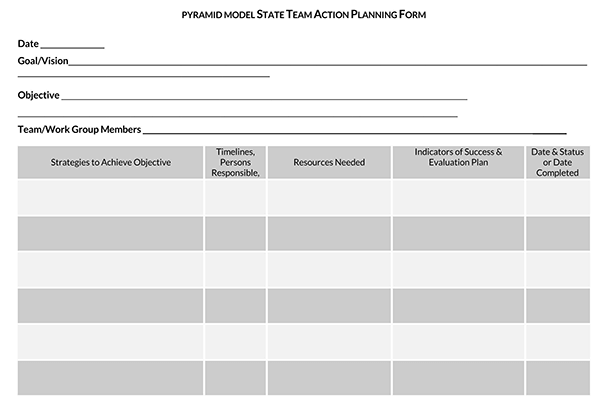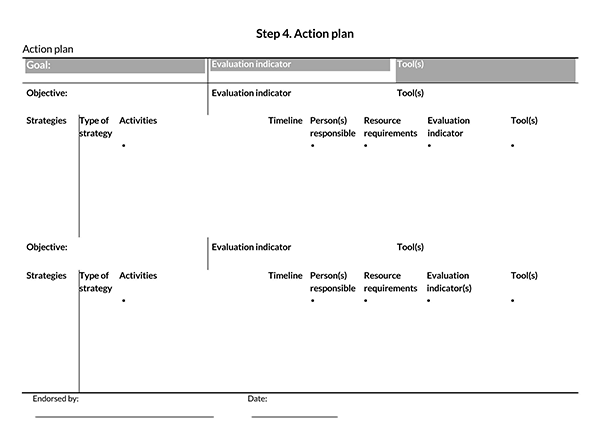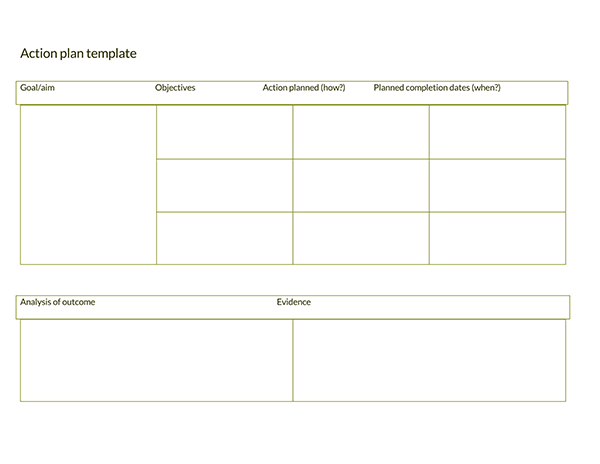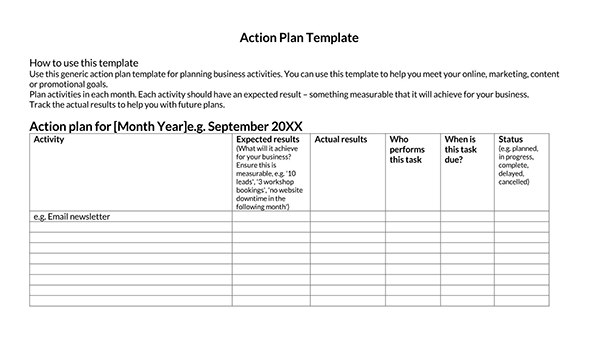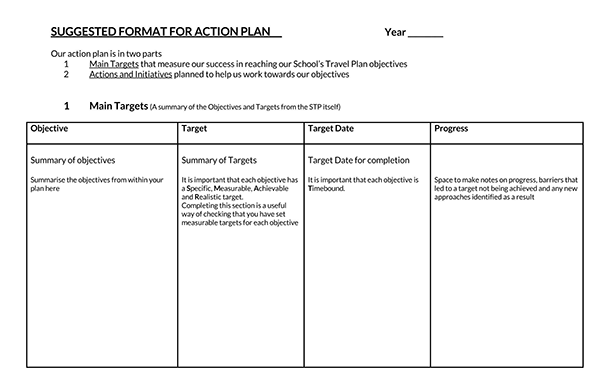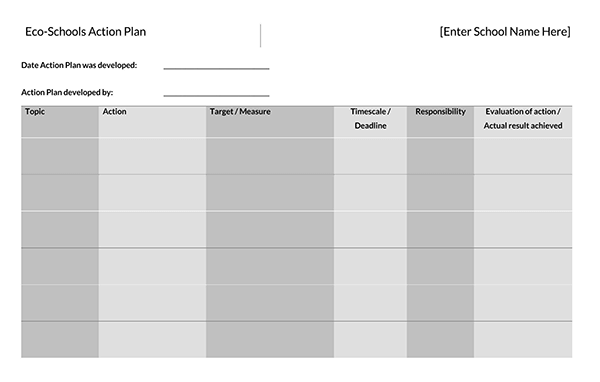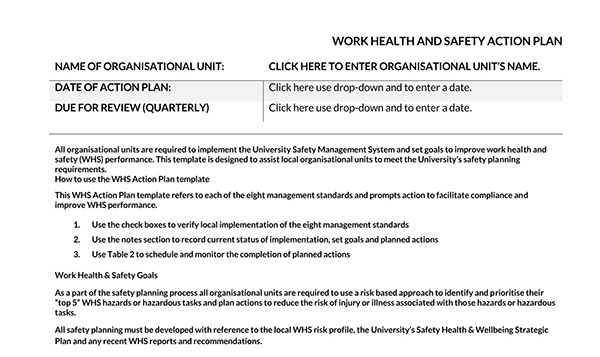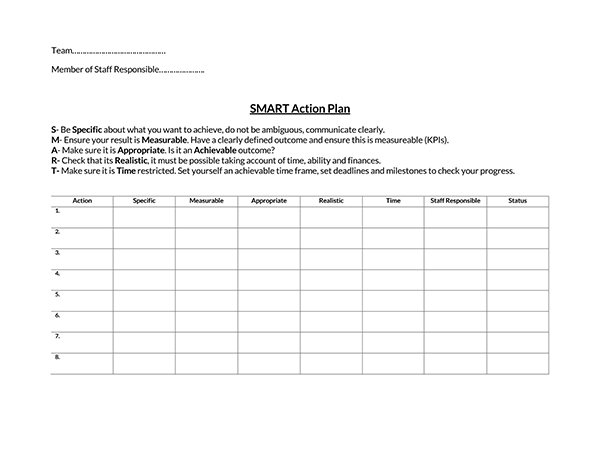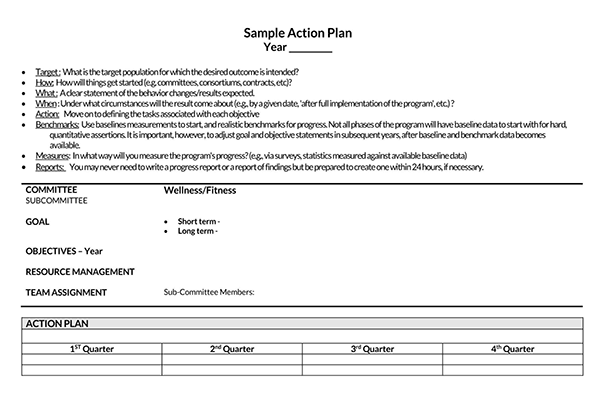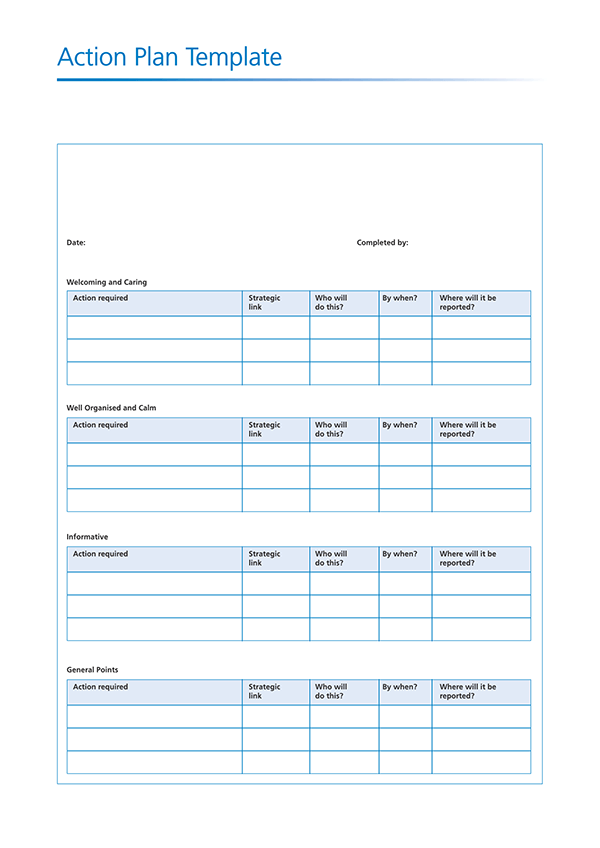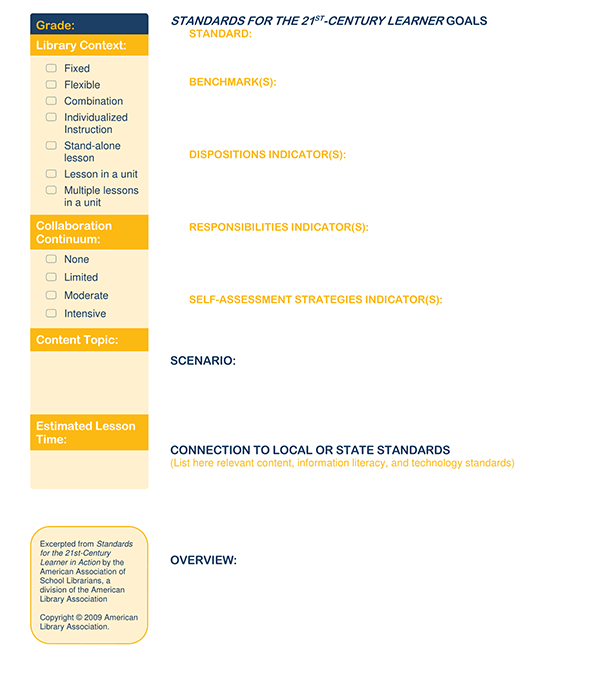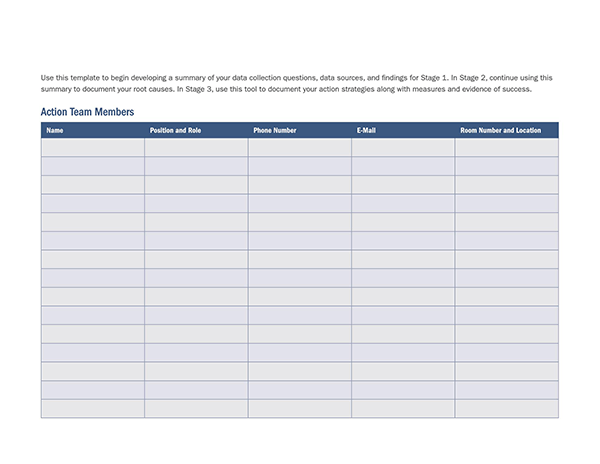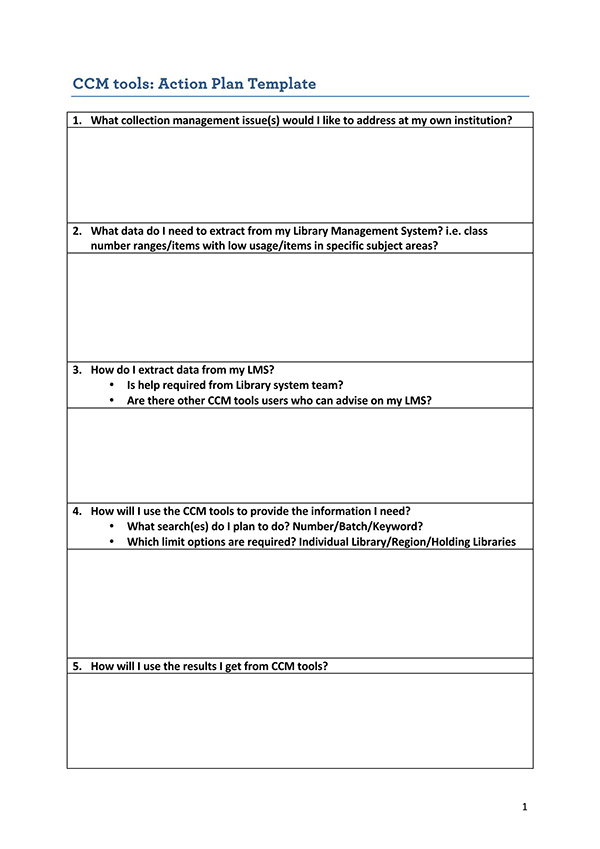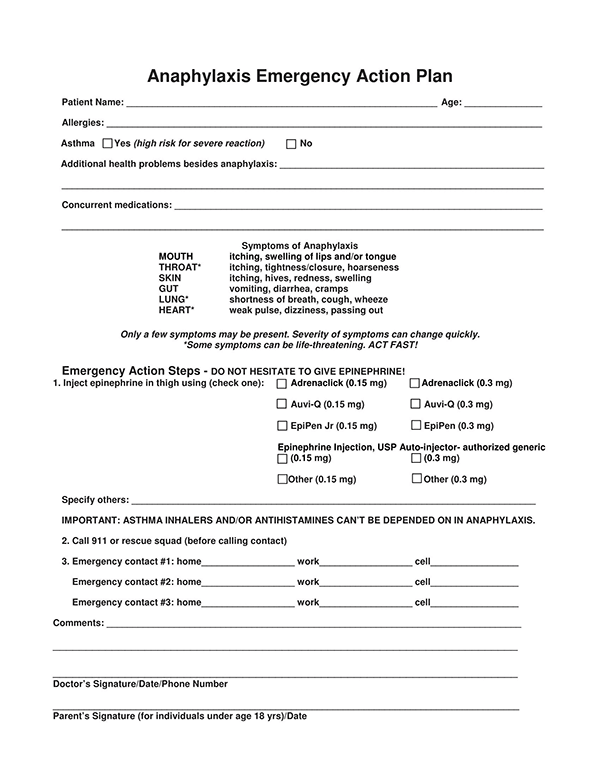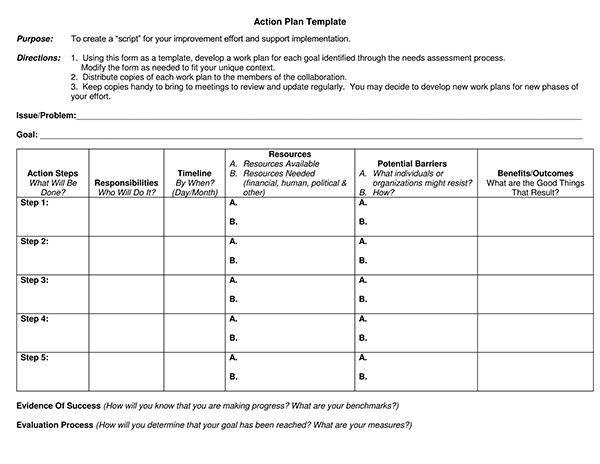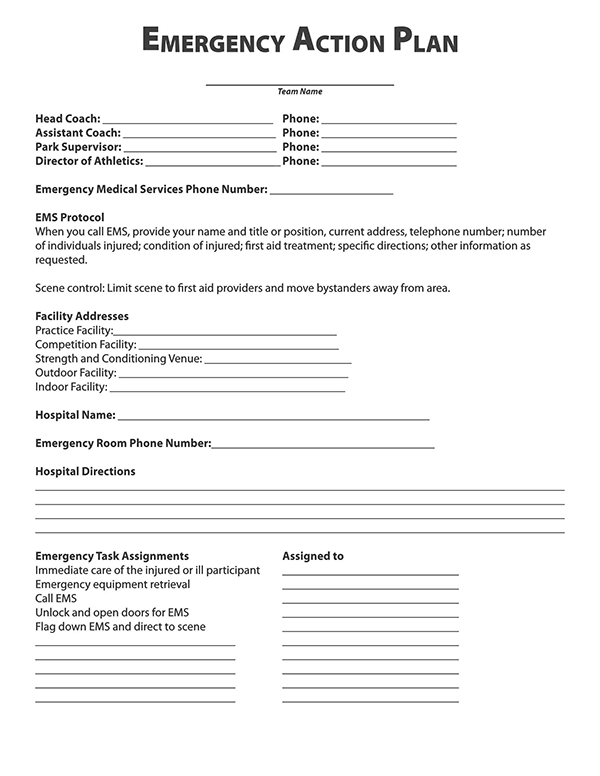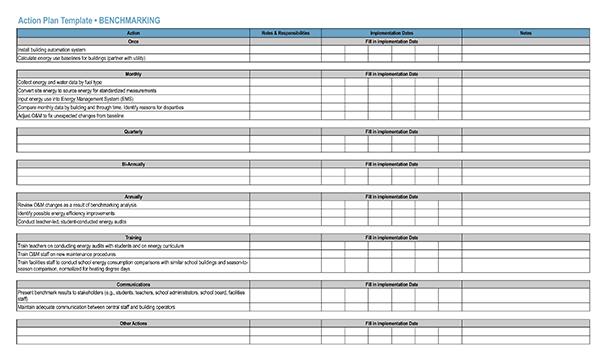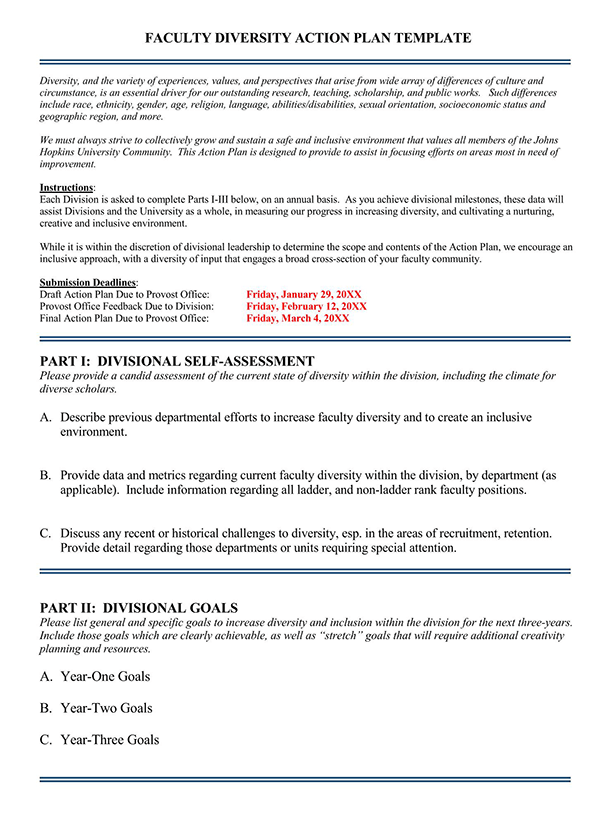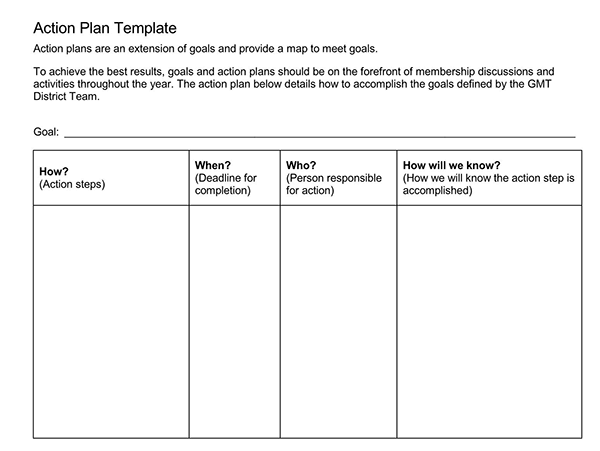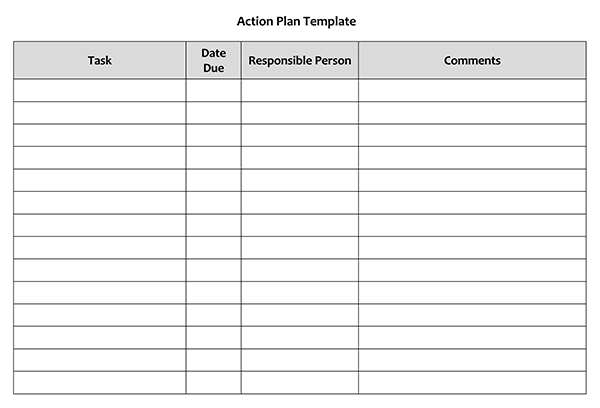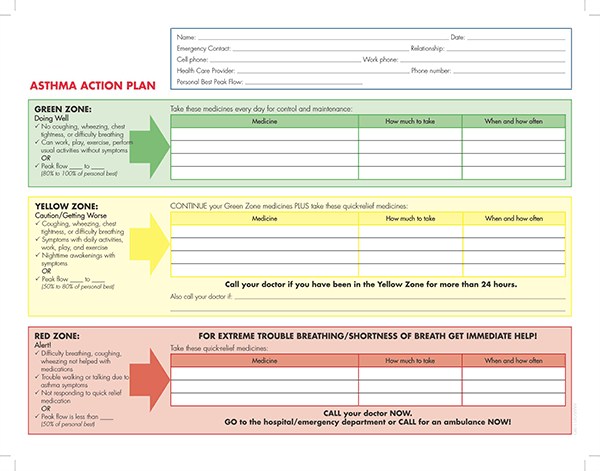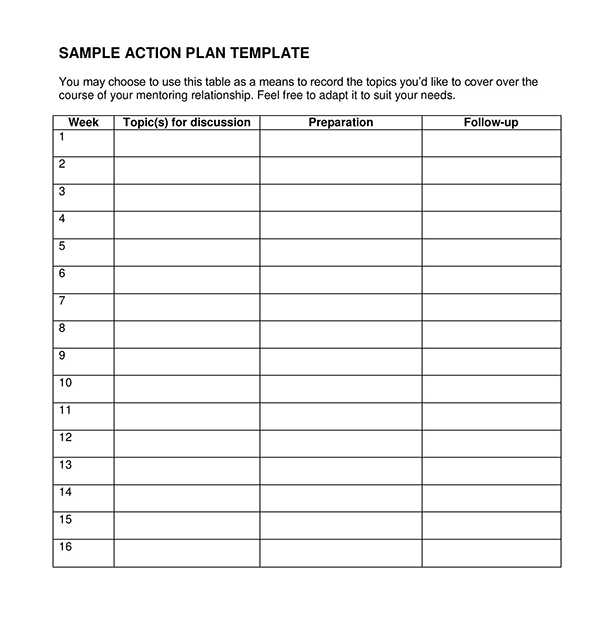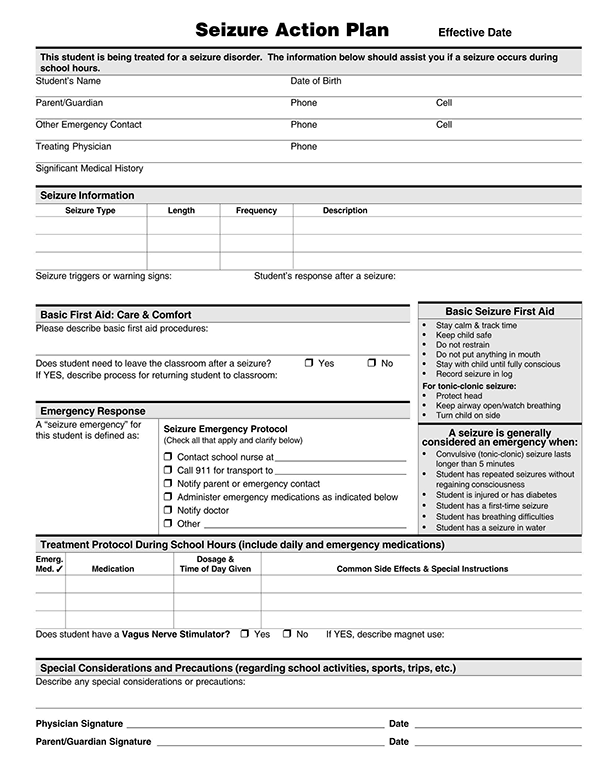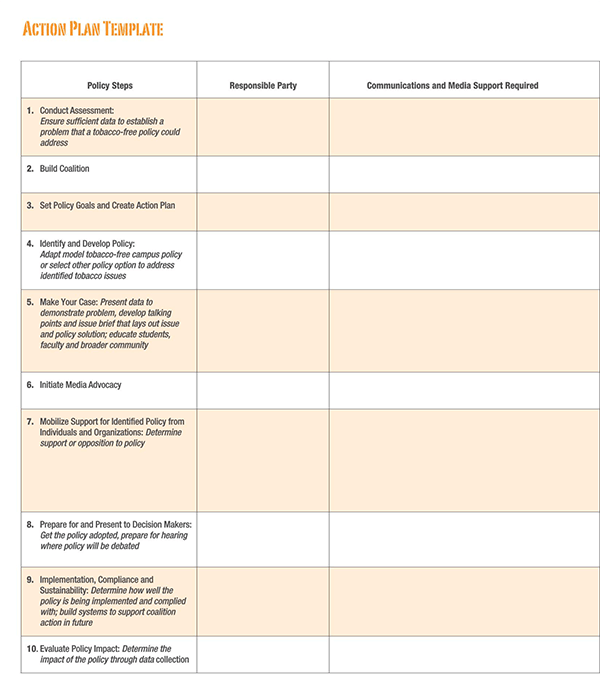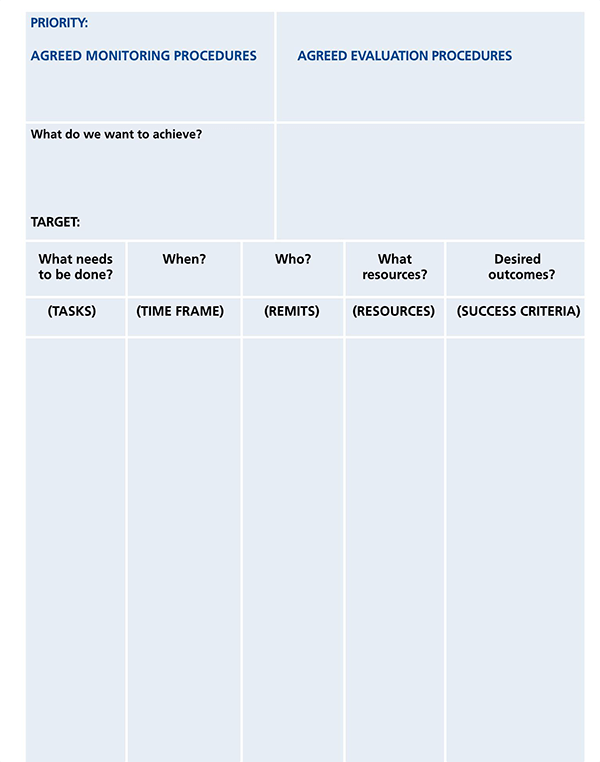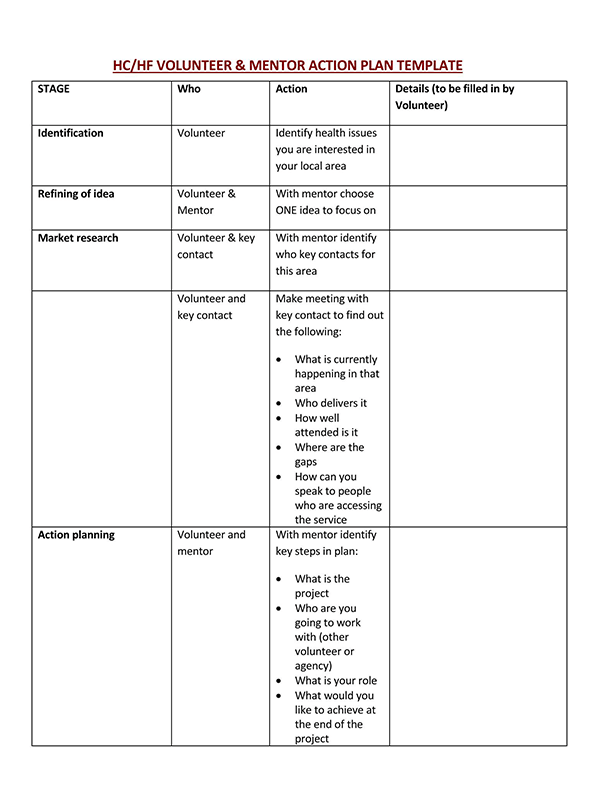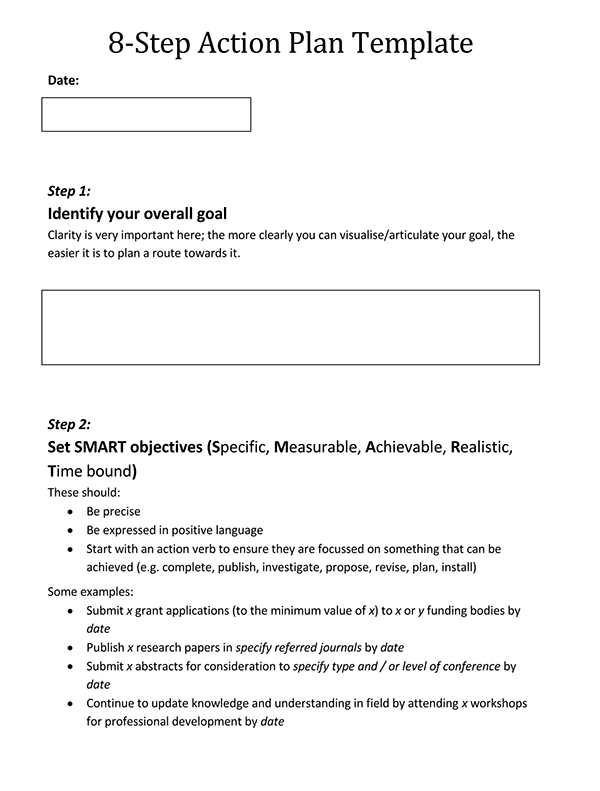An Action Plan is a strategic way that explains the plan of action to complete a project.
This plan aims to clarify the resources required to reach the goal, formulate a timeline for when the identified tasks need to be completed, and determine what team members you will need to complete the tasks.
Well-developed action plan templates make it easier for people to track and realize their goals or vision. Whether you run an organization, have a career, a small business, or are trying to realize your individual goals, this plan can help simplify the planning process by stating what needs to be done and identifying the measures of success for better control. This creates a more straightforward path to achieving efficiency and project success.
Generally, the level of detail in an action plan can vary depending on the complexity of your goals or the project and the resources you will be working with. However, all plans incorporate the same content, including a clearly defined goal, tasks that must be carried out to reach the goal, people involved, milestones and task deadlines, resources needed to complete the tasks, and measures to evaluate progress. Based on your preference and unique needs, you can use it to set single or multiple goals.
This guide will discuss what an action plan is, who needs to write its template, how to write it, its importance, and tips for writing this plan that can help you realise your goals smoothly and successfully.
Free Templates
Who Needs to Write an Action Plan?
Action plans can be helpful for anyone’s professional or personal life and in a variety of situations. Whereas the complexity of high-level executive action plans might vary with those of entry-level workers or personal goal plans, the ultimate goal of both documents is usually the same- to ensure that daily tasks are building towards a given goal. The main distinguishing feature between action plans at various organizational levels is the scope of the document.
Thus, the following individuals may need to write an action plan:
Managers
Managers may need to create an action plan to lay out tangible steps necessary to complete a short or long-term goal. This plan will detail achievable goals for the employees and set up a system for measuring results, giving and receiving feedback, budgeting for the company resources in an intelligent way, and promoting an atmosphere where work can be done efficiently and effectively.
Entry-level workers
Entry-level employees may create an action plan that details the larger business goals to have an easier time setting and achieving short-term goals aligned with broader corporate interests.
Individuals
Individuals may need to formulate these plans for themselves to help them accomplish their individual goals.
How to Create an Action Plan Template
While different action plans may differ in tasks and timelines, they all conform to the same structure and generally incorporate the same types of information.
To create an action plan template that can help you achieve your goal, consult the following procedural guide:
Brainstorm and identify specific tasks
The first step of writing an template is to define your goal and view the precise tasks you will need to accomplish to achieve the goal. Brainstorming is essential in this step, and different factors such as the importance of the goal, availability of the required resources, and the available time frames have to be considered.
To ensure success in this first step, start by analyzing your current situation and exploring possible solutions before prioritizing them.
Next, write down your goal and make sure it aligns with the SMART criteria, that is:
- Specific: Your goal has to be clear and well defined
- Measurable: It ncludes quantifiable indicators of tracking progress
- Attainable: The goal is realistic and can be achieved using the available resources
- Relevant: The goal should align with your values and long term objectives
- Timely: Your goal should have a realistic, ambitious end date for motivation and task prioritization.
List down the steps to be followed
Drawing from your brainstormed document, draft a list of tasks you need to complete to achieve your goal. This process generally involves dividing the main goal into several interim goals or milestones divided into action steps. This helps to simplify the overall goal and makes it seem less overwhelming for both you and your team members.
It is also important to include a realistic timeframe for which the tasks should have been completed and the people responsible for completing them. Besides, ensure that your entire team is involved in this process and has access to the action planner. This ensures that everyone is informed of their roles and responsibilities in the project.
Use SCHEMES to double-check your action plan
Verify whether you have everything you need to complete the plan. You can make use of the SCHEMES criteria to double-check it.
SCHEMES is an acronym that stands for:
- S: Space
- C: Cash
- H: Helpers
- E: Equipment
- M: Materials
- E: Expertise
- S: Systems.
Prioritize tasks and add deadlines
Next, reorganize your list of tasks and prioritize them based on their complexity. This is important as some steps may be blocking other sub-steps. Afterward, establish a timeframe for completing each task in the process. You must add a timeline that you or your team members can reasonably follow to maintain consistent progress toward achieving the goal. Moreover, consult with the people responsible for completing the specific tasks to understand their capacity before agreeing on suitable deadlines.
Set milestones
Milestones are markers in a project that signifies a change or stage in development. Setting milestones in the writing phase of an action plan template is essential as they show key events and map forward movement in your project plan. This helps keep everyone involved in the project motivated and ensures you are on track because you have a good idea of where you stand.
Allocate the resources
If you are working on a big project, the chances are that there will be several people involved across various departments. Therefore, you will need to assess the skill sets needed to accomplish each of the identified project tasks and determine which of your team members is best suited to execute the specific tasks.
Afterward, write down who will be in charge of the objective and who will be assisting, then detail the necessary resources to accomplish those objectives such as equipment, materials, time, money, etc.
If the required resources are currently unavailable, you will need to factor in how to acquire them. Including a budget section in your template will help you determine the costs of each resource, making your action plan more feasible and implementable.
Visualize your action plan
Once you have written a detailed plan, it is time to visualise the road to success you have outlined. This step aims to simplify the action plan and ensure that everyone involved in the project can understand it right away, such that you are both on the same page.
Whether the action plan template is in the form of a table, a Gantt chart, or a flowchart, you must ensure it clearly communicates the critical elements of an effective action plan which includes a clearly defined goal, tasks leading up to the main goal, task owners, deadlines, milestones, and resources. Your template should also be easily accessible to all the project team members, and it should be editable.
Monitor, evaluate, and update
The final step of writing an action plan entails describing how you will ensure each task in the template is completed on time. You can consider holding regular meetings with your project team members to monitor and evaluate the overall progress or using internal reporting. This ensures that you have a clearer idea of the progress you are making toward your main goal.
Part of monitoring the overall progress of your action plan involves assessing how successful you have been at each milestone or end of the delivery date. Monitoring also identifies tasks that are pending, delayed, or are not going according to your plans, in which case you will be able to figure out why, find suitable solutions and then adjust it accordingly.
Why do You Need an Action Plan?
When a project is relatively small, where what has to be done and the steps to achieve it is clear, and the people involved in the project are few, developing an action plan might not be necessary or very beneficial.
However, for medium-sized projects, more extensive and complex projects or programs, an action plan is essential due to the following reasons:
- Provides clear-headed direction: An action plan helps you identify a clear path to move towards your goal and organise associated tasks in the most logical way to achieve your goal efficiently.
- Unwavering attention and focus: An action planner allows you to focus and concentrate on your tasks without being distracted. It highlights the exact steps you need to take to complete a goal and the timeframes you have.
- Fosters commitment: A well-designed plan can make it easier for you and everyone involved in a project to stay committed to their work to accomplish the set goals. Creating an action planner demonstrates the will and desire to work on the tasks to accomplish your goals.
- Progress indicator: A planner usually identifies measures of success or milestones towards a larger objective. Since each task is laid out with the necessary steps to complete it, it will be easier to measure each step and ensure it achieves its aim and contributes to the larger objective.
- Provides motivation and energy: Because success can be easily measured and progress monitored continually, an action plan allows you to remain motivated, enabling you to keep your projects on schedule, and if applicable, within the set budget.
- Ensures easy prioritization of tasks: It lets you prioritize tasks according to the complexity and or the duration needed to complete each task. This is vital as it helps you identify the high-impact works that must be completed first to ensure efficiency in realizing your ultimate goals.
- Psychological uplifting through reduced stress: Setting out all the tasks that need to be done to achieve a specific objective and making decisions about how much resource is available to complete the tasks allows for an accurate assessment of how long the overall action plan will take. This reduces unnecessary pressure to achieve, thus reducing stress.
In addition, the plan allows you to act, and when you act according to your plans, you will achieve some level of satisfaction and feel extremely fulfilled.
Action Plan Examples
Using a Action Plan Template
Such template is a document that can be downloaded online to customise to suit your unique objectives. One of the main benefits of using an action plan template is that it is usually professionally formatted. Thus, you only have to edit it appropriately and print it out for use. Multiple layouts are possible for templates, but they will typically contain the same information regardless of the template’s structure.
The following are general tips on how to use an action plan template to create an effective plan:
Section 1: Action steps
This section requires you to choose an appropriate goal and clearly define your objective. Consider the importance of the goal and how achievable it is considering the time frame and the available resources.
This section will typically be broken down into the following key points:
- Priority: You should prioritize your tasks into high, medium, or low priority tasks to help you come up with a more realistic plan.
- Tasks: Determine all the tasks that must be completed to achieve the goal you have identified and list them in this template section. Using a team to determine the tasks needed to be done essentially as you will brainstorm ideas that help create a more robust plan of action. In the project planning phase, you may find that you need input from other experts outside of the team; thus, you should consider consulting them as well.
- Phase: Note down where the action steps take place over the project life cycle, such as in the planning phase, execution, closing, etc.
- Assignees: Identify who is responsible for each action step and those that will be supporting them. The individuals assigned the tasks will be responsible for the outcome of the action steps, and those supporting them will assist in the process.
- Status: This is the part where you chart the work done on every task. Enter a completion percentage or any status that you wish to assign to track progress.
Section 2: Timeline
The second section of the action plan template normally contains the timelines for completing the proposed project plans.
This includes the following details:
- The start date: Enter the date on which a specific task must begin to keep your project on track
- The due date: Note down the deadline before which a particular task must be completed, and make sure that everyone working on it is clear about its due date.
- Planned hours: During the action planning phase, you will have determined how many person-hours you need to allocate for each task. This is the section where you input that information.
Section 3: Resources
In this part, list the resources necessary for accomplishing your concrete, measurable and attainable action steps.
Information to enter here include:
- Department: If you run an organization, write down the department’s name responsible for each specified task.
- Materials required: Once you have allocated different tasks to different departments, determine the materials required to complete the assigned tasks and enter them in this sub-section. Materials that may be required include equipment, software, site, etc. If sufficient resources are currently unavailable, include a plan for their acquisition.
- Costs: Enter your estimated budget for the entire project and specify the costs associated with each task that must be completed to realize your goals.
- Notes: Any additional information that does not suit the above-discussed categories goes here.
Tips For Writing an Action Plan
A solid action plan is one of the best ways of turning your dreams into a reality. It provides you with a checklist of necessary steps or tasks you need to complete to achieve a goal enabling you to avoid challenges and problems amidst the journey.
Here are the essential tips to help you write an effective plan:
- Always break down the goal into action steps and identify the smaller tasks that need to be completed for each of your action steps
- Pay much attention to task priorities and set realistic deadlines for your tasks. It is also a great idea to onboard everyone about the priorities and deadlines so that the action plan works in favour of everyone, rather than just a few people. This ensures that you have real-time data that everyone can access, fostering commitment to the project goal.
- Whenever a task is completed, mark it on your progress chart to track milestones and project success. When tasks are added or changed, you should also inform everyone involved to help you become more efficient in what you are doing.
- It is essential to assign different tasks to different individuals or organizational departments to allow for accountability of project outcomes and create a sense of individual and collective ownership for the action plan
- Have clear and open communication lines between you and your colleagues and keep an ongoing discussion on pending or late tasks to achieve consensus on the project’s objective and priorities. When everyone involved can contribute ideas through negotiations, discussions, and compromise, the most important actions will emerge, and project success is assured.
Frequently Asked Questions
You can write your action plan by following the six basic steps. First, brainstorm ideas with everyone involved in the project and identify specific tasks that must be done to achieve the goal. Secondly, create a list of the action steps, then verify your plan using SCHEMES. The fourth step of writing an action plan entails prioritising tasks into high, medium, and low priority tasks and including attainable deadlines for the prioritised tasks. Next, set milestones or project success indicators and finally, monitor, evaluate and update the action plan as needed.
SMART stands for specific, measurable, achievable, realistic, and Time-bound. Hence, a SMART plan provides the framework for achieving a goal that incorporates all of these criteria to help keep you focused on the project’s main objective, increasing your chances of achieving your end goal.
